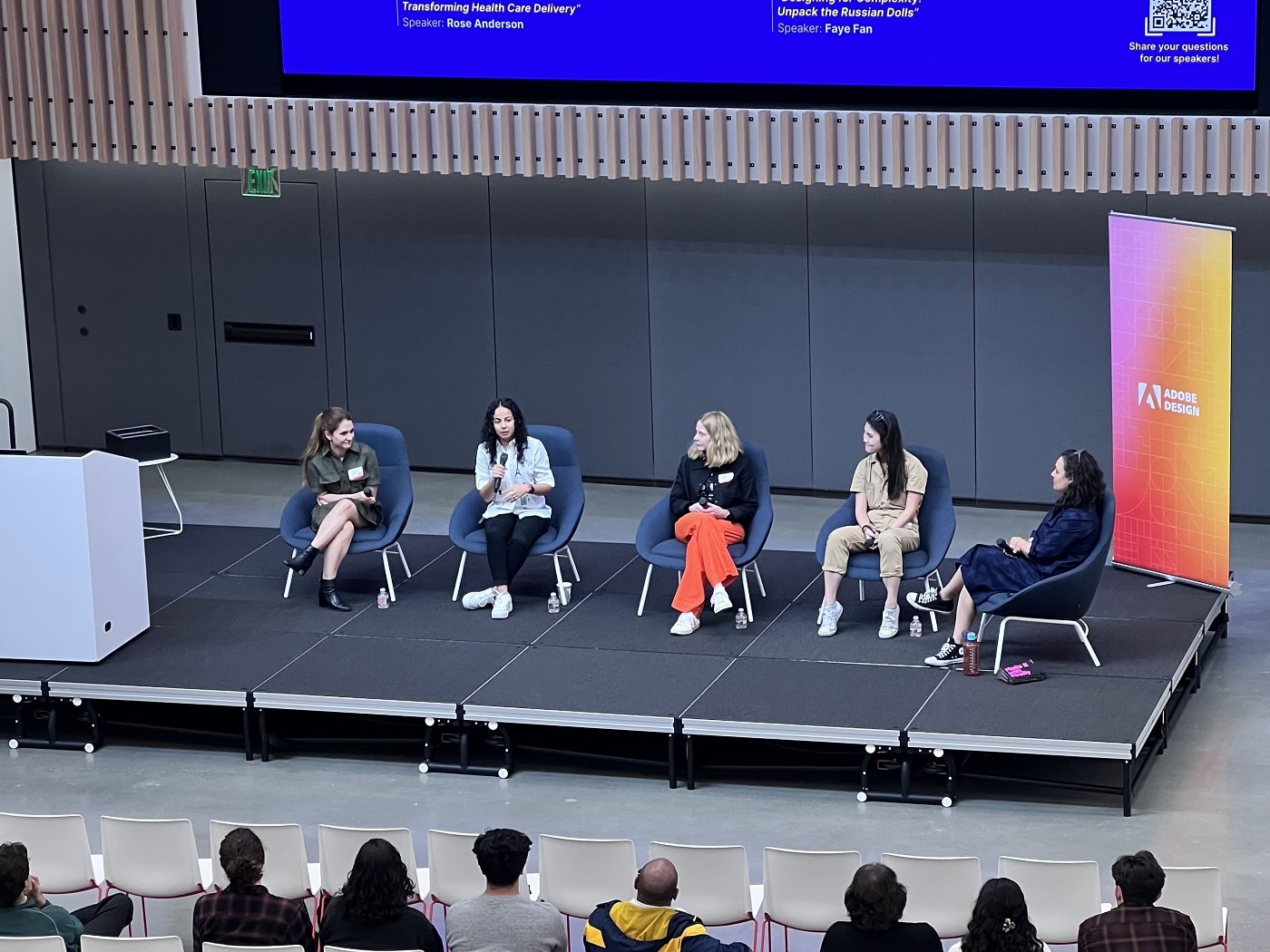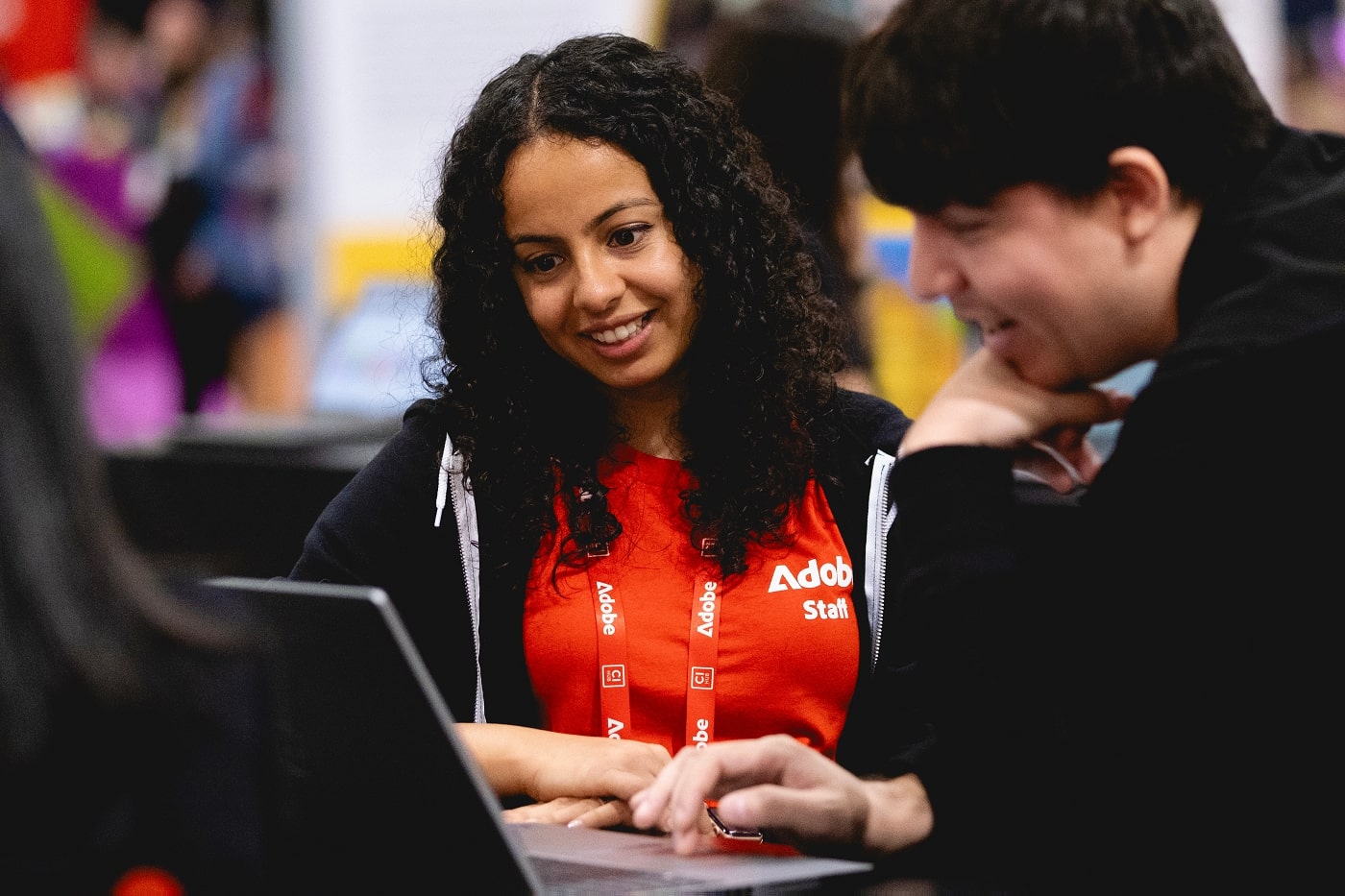Last Updated on February 22, 2024
Today, growth design is emerging as the pulse of the design landscape. Melding user experience with business objectives, it’s not just about aesthetics; it’s about orchestrating a symphony where every note resonates with both business growth and user delight. As industries pivot and morph, growth design stands tall, proving its mettle in the ever-evolving digital panorama.
Purva Takkar, a beacon in this domain, has been crafting narratives that transcend the ordinary. As a Growth Designer at the tech titan, Adobe, Purva’s trajectory from New Delhi’s bustling lanes to the tech hubs of the San Francisco Bay Area is a testament to her prowess. Beyond her role, her achievements are a mosaic of brilliance.
From her groundbreaking work recognized by Stanford University, harnessing the might of Google Machine Learning and Snapchat’s AR Studio Lens, to the revered Dr. A.K.G. Nair Award from Pearl Academy, each feather in her cap tells a story of innovation and dedication. But it’s not just awards and roles that define her; it’s her relentless zeal to shape the next-gen designers, guiding them both in intimate mentorship sessions and across digital expanses.
Recently, we sat down with Purva, plunging into the depths of her journey in growth design. Our tête-à-tête spanned her unique approach, data’s dance in her design decisions, and her unyielding passion for mentoring tomorrow’s design mavens.
Stepping into our conversation with Purva is akin to entering a masterclass on the art and science of design. With every question and response, layers of her expertise unfurl, offering readers a rare glimpse into the intricacies of her craft.
So, pull up your favorite chair, settle in, and let’s traverse the captivating terrain of growth design with Purva Takkar.
Tell us, Purva, how has your background in communication design influenced your approach to growth design?
Growth design seamlessly integrates elements of UX, UI, and graphic design, and it’s further enriched by user research and business analytics for precision. While I was immersed in communication design, I crafted social media graphic styles and strategies for a range of brands across the APAC region. Every social media post provided audience feedback, gauged through reactions, interactions, and reach. This feedback guided us to refine our graphic language and messaging, aiming to amplify the brand’s visibility.
I realized the significance of aligning product tonality with the audience and the transformative potential of analytics. It’s truly remarkable how minor adjustments can yield profound results. This insight was pivotal as I transitioned into growth design.
Can you describe the role of data and analytics in growth design?
Data plays an instrumental role in growth design, guiding our decisions at multiple junctures. Daily, it highlights areas in the product where users encounter hurdles and those segments that truly resonate with them. Armed with this insight, our design team formulates hypotheses to enhance user experiences. We then test these through experiments on select audience segments. Relying on the data-driven outcomes, we persistently iterate until we achieve optimal user journeys within the product. In essence, data ensures team alignment, aids in prioritizing our focus, and drives our mission to constantly refine the user experience.
Can you share a project where you successfully combined business and user needs in an innovative way?
We recently unveiled a revamped version of Adobe Express. While Express always offered both free and paid plans, feedback indicated that users struggled to discern the premium plan’s value. We theorized this might be due to the immediate paywall users encountered when accessing premium features, depriving them of experiencing the full might of the Premium tier.
With the latest iteration of Express, we introduced users to elements of the Premium features first, pushing the paywall appearance a bit later, allowing them more room to experiment and engage with their projects. From a business perspective, this approach posed a risk, as it reduced the frequency of paywalls presented to the user. However, post-launch, it became evident that users not only grasped the enhanced capabilities of Express Premium but also developed a deeper trust in the product.
Data underscored that users who encountered this revamped paywall experience demonstrated a stronger inclination to upgrade and remain engaged, compared to those who faced frequent paywalls earlier. This rejuvenated user experience stands as a testament to the synergy between growth design, business objectives, and, most crucially, user satisfaction.
How do you prioritize user needs while balancing business goals in your designs?
Growth design artfully merges business objectives with user desires, all while evolving rapidly to match the swift tempo of the tech industry. Each experiment within the product sees me joining forces with the product manager, researcher, and data analyst on our team. Together, we craft a holistic view of specific user experiences and strategize enhancements. In this tapestry of insights, a designer’s role becomes pivotal, weaving together these diverse viewpoints into a cohesive design.
Once a solution emerges that harmoniously addresses both business and user concerns, we validate it through user research, ensuring it resonates with our audience. Following the user study’s positive outcome, we deploy the test and monitor analytics to confirm it aligns with our business metrics. This meticulous process ensures that only the most refined experiences reach our broader user base.
How do you stay updated on the latest advancements in growth design and user-centered design?
Adobe excels in championing our professional growth. They generously sponsor our attendance at premier conferences and courses, including Reforge and the growth psychology course offered by growth.design. Furthermore, they regularly invite industry thought leaders for invigorating talks, fueling our drive to innovate.
Beyond the organizational support, I actively engage with platforms like ADPList and AIGA (SF Chapter). These platforms allow me to connect with designers from diverse practices and regions. Additionally, I’ve curated my Instagram feed to follow influential growth designers, ensuring I assimilate knowledge even during my leisure browsing.

Can you talk about your experience of mentoring young designers, both in-person and online?
My initial foray into mentoring began organically, with friends approaching me. They were keen to understand more about my grad school experience, the admission process, and the nuances of the UX domain. Recognizing the time I dedicated to informal design discussions, I sought to bring more structure to the process by engaging with ADPList. Even as a mentor, I frequently consulted my own mentors, ensuring that the title didn’t foster ego or overshadow the humility of my beginnings. Recalling my own days as a mentee has been instrumental in grounding me.
My approach leans heavily into discerning the genuine needs of my mentees. Instead of merely dispensing advice, I engage them with thought-provoking questions, encouraging them to view challenges from varied angles. I believe in empowering them to find solutions independently. This self-discovery, complemented by a dose of confidence, is often the catalyst they need to move forward.
How do you apply your understanding of user behavior and preferences to drive business growth and customer satisfaction in your designs?
User research and analytics are foundational in spotlighting user needs and behaviors. With insights drawn from these dedicated teams, we continuously enrich our understanding of user personas, adapting to the ever-evolving landscape. From these findings, we carve out product and design principles that shape the solutions we craft. These principles not only provide clarity but also align our internal stakeholders on the myriad decisions that arise. To bolster this, we set guardrails for all our product tests, ensuring we consistently steer toward enhancing business growth and elevating customer satisfaction.
Lastly, what do you believe sets growth design apart from other design practices, and why do you think it’s important for designers to consider it?
In our rapidly evolving tech landscape, the art of iteration in design remains timeless. However, growth design is a fresh approach and team model, enabling concurrent testing and experimentation alongside core product teams. While core product designers craft deeply valuable and seamless feature experiences, growth designers ensure that the maximum number of users engage with that value promptly and frequently. It’s a strategic synergy: product designers approach with a conceptual lens, while growth designers hone in behaviorally.
While growth designers can gather real-time insights from experiments within a fortnight, product designers are often immersed in shaping a more extended vision. The growth space is a haven for risk-free experimentation, encouraging resilience through the inevitable setbacks. This partnership is a goldmine for product designers. Collaborating with growth designers offers insights to fortify their broader design vision.
To thrive as a growth designer, one must possess an insatiable curiosity and an open mind. Embracing failures as learning opportunities is key. It’s essential to dissect ideas and experiences into manageable experiments, continually evaluating what works and what doesn’t. This role demands challenging one’s preconceptions and continuously refining one’s design approach.

